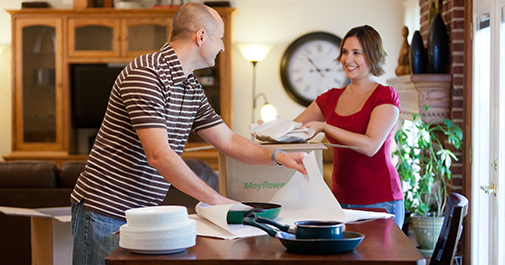Hiring a terrific moving company may rank only second to picking out your dream home. If you stop and think about it, the people you hire will be in charge of handling personal belonging, fragile items, and precious family heirlooms.
When packing and transporting irreplaceable things, there are no second chances. That’s why it’s essential to conduct thorough due diligence and ensure you are working with a careful crew you can trust.
Here are five ways to vet professional moving companies and choose the right one.
1. Thorough Moving Estimators are a Positive Sign
If you are considering a residential moving company, it’s in your best interest to get a few competitive quotes. When the company provides someone in-person or through a virtual survey to review your belongings and calculate the cost, their detail speaks volumes about the organization.
A thorough estimator will take an inventory that looks at the number of fragile items, square footage, trips, and discusses transportation methods. Estimators may be a sign of what type of people the moving company hires.
2: Consider Moving Company Referrals from Friends & Family Members
It’s usually worth considering the experience people in your orbit had with a moving company. Many outfits have established policies for their employees. These include appropriate ways to handle personal belongings, fragile items, and protective measures for getting bulky furniture through doorways unscathed. If someone you know had a good experience, it stands to reason they are worth considering. Of course, the opposite also holds as well.
3: Verify the Moving Company is Licensed and Insured
You might be surprised by how many unlicensed and uninsured movers present themselves as professionals. Some people think that moving a family to a new home is just a matter of loading up a truck and doing some heavy lifting. Nothing could be further from the truth.
In reality, experience, safety equipment, and a mindset to care for a client’s belongings are necessary. It’s always best to work with a licensed and insured professional over some guy with a truck.
4: Take a Look at Online Reviews
Living in the information age has its benefits. When hiring a moving company, you can check reviews written by a company’s former clients and get the details. Check the top-rated reviews and consider the description of why they enjoyed a positive move. Weigh this against poor experiences and the reasons provided.
Online reviews typically run the gamut of personal opinions. If nothing else, the information may prompt you to ask pointed questions.
5: Does the Moving Company Use Specialized Teams?
One of the cost issues when hiring a mover is whether to pack your own belongings. This is crucial because a moving company’s insurance may not cover damage if you do it yourself. On the other hand, outsourcing the packing phase does add an expense.
But beyond the cost, it’s worth asking who would do this packing. If the moving company sends an advanced team of experienced packers to handle the task, that speaks volumes about care. If they are the same people who also do the heavy lifting, that may demonstrate a lack of specialization.
The Right Movers
Hiring a moving company that fits your needs requires due diligence to develop a sense they are thorough professionals who will take good care of your things. By using these and other strategies, you’ll be able to make an informed decision when the vetting process has been completed.
Contact us today. See how we can help you with your move.








